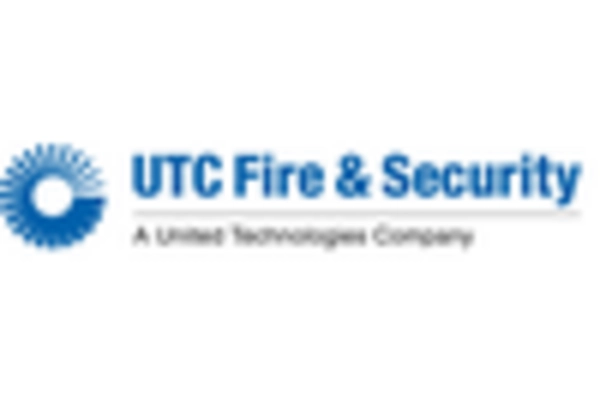Increased Urbanization
The rapid urbanization in South Korea is driving the fire protection-systems market. As more people migrate to urban areas, the density of buildings increases, leading to a higher risk of fire incidents. This urban growth necessitates advanced fire protection systems to ensure safety in residential and commercial buildings. According to recent data, urban areas in South Korea have seen a population increase of approximately 10% over the last decade, which correlates with a rising demand for effective fire safety measures. Consequently, the fire protection-systems market is likely to expand as municipalities enforce stricter safety regulations to protect densely populated areas.
Rising Insurance Requirements
The increasing stringency of insurance requirements is influencing the fire protection-systems market. Insurers in South Korea are mandating higher safety standards for properties, which necessitates the installation of advanced fire protection systems. This trend is particularly evident in commercial real estate, where insurance premiums are often tied to the level of fire safety measures in place. As a result, property owners are compelled to invest in comprehensive fire protection solutions to mitigate risks and comply with insurance policies. This shift is expected to drive growth in the fire protection-systems market, as businesses seek to protect their assets and reduce potential liabilities.
Government Initiatives and Funding
Government initiatives aimed at enhancing public safety are a crucial driver for the fire protection-systems market. In South Korea, the government has allocated substantial funding for fire safety programs, including the installation of advanced fire protection systems in public buildings. Recent reports indicate that the government plans to invest over $200 million in fire safety infrastructure over the next five years. This funding is likely to stimulate growth in the fire protection-systems market, as it encourages the adoption of modern technologies and compliance with updated safety regulations. The proactive stance of the government reflects a commitment to reducing fire-related incidents and enhancing overall safety.
Technological Advancements in Fire Safety
Technological innovations are significantly influencing the fire protection-systems market. The integration of smart technologies, such as IoT devices and AI-driven analytics, enhances fire detection and response capabilities. In South Korea, the adoption of these technologies is growing, with an estimated market value of $1.5 billion projected for smart fire safety solutions by 2027. These advancements not only improve the efficiency of fire protection systems but also reduce false alarms, thereby increasing trust in fire safety measures. As technology continues to evolve, the fire protection-systems market is expected to adapt, offering more sophisticated solutions to meet the needs of modern infrastructure.
Environmental Regulations and Sustainability
The growing emphasis on environmental regulations is shaping the fire protection-systems market. In South Korea, there is an increasing focus on sustainable building practices, which includes the implementation of eco-friendly fire protection systems. Regulations aimed at reducing carbon footprints and promoting sustainability are encouraging the development of fire safety solutions that are both effective and environmentally responsible. This trend is likely to lead to innovations in materials and technologies used in fire protection systems, aligning with broader sustainability goals. As the market adapts to these environmental considerations, it may open new avenues for growth and development in the fire protection-systems market.
















Leave a Comment